Home>Garden Essentials>How Does Crop Rotation Affect The Environment?
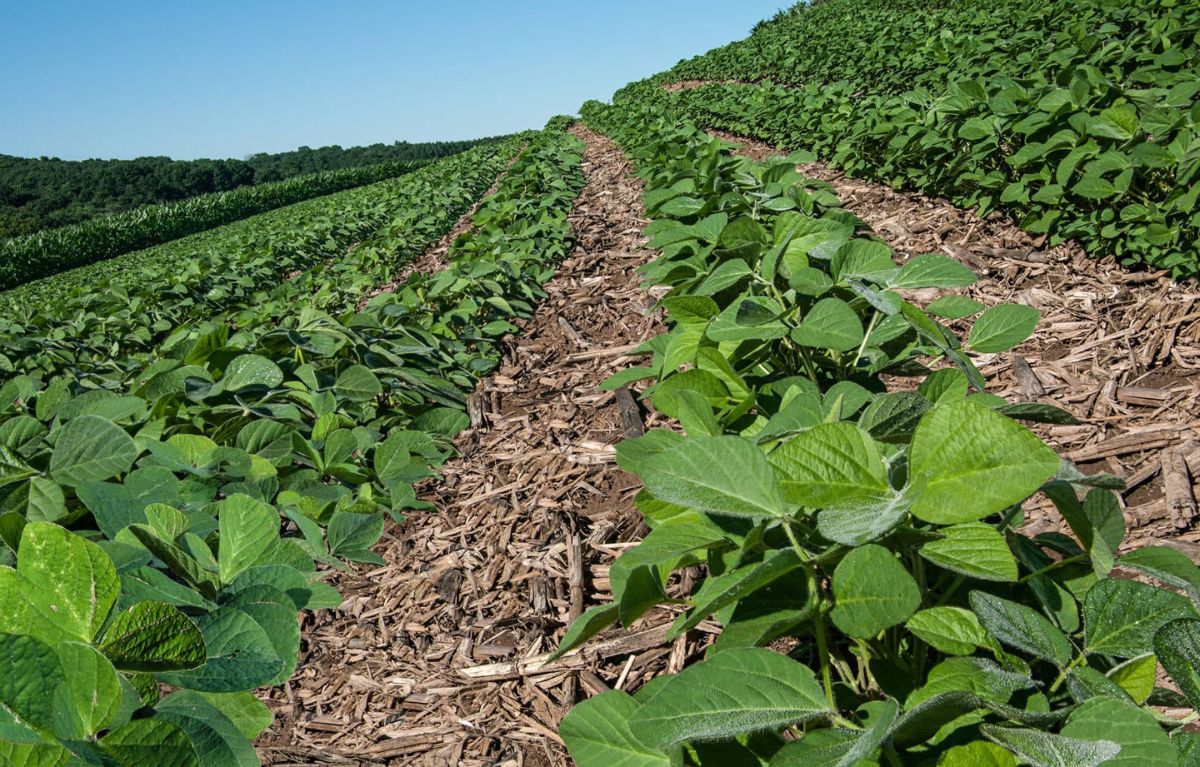

Garden Essentials
How Does Crop Rotation Affect The Environment?
Modified: March 15, 2024
Discover the impact of crop rotation on the environment and garden health. Learn how this sustainable practice benefits soil quality and reduces pests.
(Many of the links in this article redirect to a specific reviewed product. Your purchase of these products through affiliate links helps to generate commission for Storables.com, at no extra cost. Learn more)
Introduction
Crop rotation is a time-honored agricultural practice that involves systematically planting different crops in a specific sequence on the same piece of land. This method has been used for centuries by farmers around the world to improve soil fertility, control pests and diseases, and increase crop yields. However, the impact of crop rotation goes beyond these agricultural benefits and extends to the environment as well.
In today’s world, where environmental sustainability is of utmost importance, understanding how crop rotation affects the environment is crucial. By implementing this farming technique, we can mitigate the negative impacts of intensive agriculture and promote a healthier ecosystem.
In this article, we will delve into the concept of crop rotation and explore its various environmental benefits. From water and soil conservation to biodiversity enhancement, we will uncover the positive effects of this farming practice on the environment. Additionally, we will examine how crop rotation influences factors such as soil structure, erosion control, weed control, and pesticide use.
Join us as we explore the intricate relationship between crop rotation and the environment, uncovering its potential to create a more sustainable and harmonious agricultural system.
Key Takeaways:
- Crop rotation helps farmers grow different crops in a planned sequence, which conserves water, reduces pests, and promotes a healthier ecosystem, benefiting both crops and the environment.
- By rotating crops, farmers can improve soil structure, control erosion, reduce weed growth, and minimize pesticide use, creating a more sustainable and environmentally friendly agricultural system.
Read more: How Did Crop Rotation Affect Macroeconomy?
What is Crop Rotation?
Crop rotation is a method of systematically changing the type of crops grown in a specific area over a period of time. It involves the deliberate rotation of crops in a planned sequence, typically within a multi-year cycle. Different crops are cultivated during different years to ensure that each portion of the land is utilized effectively and sustainably.
The fundamental principle behind crop rotation is to avoid planting the same crop in the same location year after year. This practice helps to break the cycle of pests and diseases that can build up in the soil over time. By rotating crops, farmers can disrupt the habitat of specific pests, preventing them from multiplying and causing significant damage to the crops.
Crop rotation also plays a crucial role in managing nutrients in the soil. Different crops have different nutrient requirements. By rotating crops, farmers can ensure that the soil is not depleted of specific nutrients. For example, leguminous crops like beans and peas have the ability to fix nitrogen from the atmosphere and release it into the soil. By including these crops in the rotation, farmers can naturally replenish the nitrogen levels in the soil, reducing the need for synthetic fertilizers.
Moreover, crop rotation can promote a more balanced and diverse ecosystem. Planting different crops with different root structures helps to improve soil structure and organic matter content. Some crops have deeper roots that penetrate the soil, improving its structure and reducing erosion. Others have more fibrous roots that add organic matter to the topsoil, enhancing its water-holding capacity and nutrient availability.
Overall, crop rotation is a sustainable and ecologically sound farming practice that brings numerous benefits to both the crops and the environment. By implementing a carefully planned rotation system, farmers can enhance soil health, reduce the use of pesticides and fertilizers, and promote a more diverse and resilient ecosystem.
The Benefits of Crop Rotation
Crop rotation is a farming practice that offers a range of benefits, not only for the crops themselves but also for the environment. By diversifying the types of crops grown in a specific area, farmers can reap the following advantages:
- Water and Soil Conservation: Crop rotation helps to improve water and soil conservation. Different crops have varying water requirements and root structures. By rotating crops with different water needs, farmers can minimize water usage and prevent soil erosion. Furthermore, the diversity of crops helps to improve soil structure, limiting erosion and promoting water infiltration.
- Reduction of Pests and Diseases: One of the major benefits of crop rotation is the effective control of pests and diseases. By planting different crops in rotation, farmers disrupt the life cycle of specific pests and diseases that target a particular crop. This reduces their population and limits the damage they can inflict on the crops. Additionally, planting certain crops, such as marigolds or mustard greens, can act as natural pest repellents, further protecting the crops.
- Nutrient Management: Crop rotation plays a vital role in nutrient management. Different crops have different nutrient requirements and contributions. By alternating crops with varying nutrient needs, farmers can prevent the depletion of specific nutrients in the soil. Moreover, including leguminous crops in the rotation, which have the ability to fix atmospheric nitrogen, helps to naturally replenish the soil’s nitrogen levels and reduce the reliance on synthetic fertilizers.
- Biodiversity Enhancement: Crop rotation promotes biodiversity in agricultural systems. Growing a variety of crops attracts a wider range of beneficial insects, birds, and other organisms that contribute to ecosystem balance. This helps to create a more resilient and sustainable agricultural environment, as diverse ecosystems are better equipped to withstand fluctuations in temperature, pests, and extreme weather events.
Crop rotation offers an array of benefits that contribute to the overall health and sustainability of the agricultural system. From conserving water and soil to managing pests and diseases, this practice provides a holistic approach to farming that balances productivity with environmental stewardship. By implementing crop rotation, farmers can create a more resilient and ecologically diverse farming system that benefits both the crops and the surrounding environment.
Water and Soil Conservation
Water and soil conservation is a critical component of sustainable agriculture, and crop rotation plays a significant role in achieving this objective. By implementing crop rotation, farmers can effectively conserve water and protect the soil from erosion. Here’s how crop rotation contributes to water and soil conservation:
Water Conservation:
Different crops have varying water requirements. By rotating crops with different water needs, farmers can optimize water usage in their fields. For example, crops with high water requirements, such as corn or rice, can be alternated with crops that require less water, such as legumes or grains. This practice helps prevent excessive water consumption and minimizes the risk of water shortages.
Moreover, crop rotation can enhance the water-holding capacity of the soil. Some crops, like legumes, have deep root systems that can penetrate the soil and improve its structure. This, in turn, allows for better water infiltration and retention, reducing runoff and increasing water availability for plant growth.
Soil Conservation:
Crop rotation is instrumental in preventing soil erosion, which is a significant environmental concern. Different crops have varying root structures, and by alternating crops with deep-rooted systems and crops with fibrous root systems, farmers can improve soil structure, stability, and organic matter content.
Crops with deep taproots, such as sunflowers or alfalfa, create channels in the soil, improving its overall structure and reducing compaction. This allows water to penetrate deeper into the soil, minimizing surface runoff and erosion. Conversely, crops with fibrous root systems, like oats or rye, help to hold the soil together, preventing erosion and creating a protective cover against wind and water.
Furthermore, crop residue left after harvest acts as a natural mulch layer, protecting the soil from the impact of heavy rainfall and reducing water runoff. This organic matter also enhances soil fertility, providing nutrients for future crops.
Crop rotation helps farmers preserve and improve soil health, contributing to long-term sustainability. By conserving water and preventing soil erosion, this practice ensures a healthy and fertile soil environment for plant growth, supporting not only agricultural production but also the overall health of the ecosystem.
Reduction of Pests and Diseases
Crop rotation is a valuable tool for reducing pests and diseases in agricultural systems. By employing crop rotation practices, farmers can disrupt the life cycles of pests and diseases, minimizing their impact and reducing the need for chemical pesticides. Here’s how crop rotation helps in the reduction of pests and diseases:
Pest Disruption:
Planting the same crop in the same location year after year creates a favorable habitat for pests that are specific to that particular crop. These pests can build up populations over time, leading to increased damage to the crops. Crop rotation breaks this cycle by introducing different crops with varying growth habits and chemical compositions.
For example, if a field is consistently planted with corn, pests such as corn borers or corn rootworms can thrive and cause significant damage. However, by rotating corn with crops that are not favorable to these pests, such as legumes or small grains, farmers can disrupt their population growth and reduce the risk of infestation.
Disease Suppression:
Crop rotation also helps to reduce the incidence of diseases caused by pathogens in the soil. Many plant diseases survive in the soil and can infect new crops when planted in the same location. By rotating crops, farmers can disrupt the disease cycle.
For example, diseases like Fusarium wilt or Verticillium wilt affect specific crop families. By rotating crops within different families, farmers can prevent the buildup of these pathogens in the soil. For instance, rotating tomatoes with plants from the brassica family (such as cabbage or broccoli) helps to break the disease cycle, as these crops are not susceptible to the same pathogens.
Natural Pest Control:
Implementing crop rotation can also encourage natural pest control methods. By diversifying the types of crops grown in a field, farmers can attract a wider range of beneficial insects and organisms that prey on pests. For instance, growing flowering plants within the rotation can attract pollinators and pest predators, such as ladybugs or lacewings.
Furthermore, some crops have natural pest-repellent properties. Planting crops like marigolds or mustard greens in the rotation can help deter pests and act as a natural form of pest control.
By practicing crop rotation, farmers can effectively reduce the populations of pests and diseases, minimizing the need for chemical pesticides. This not only benefits the crops but also contributes to a more environmentally sustainable farming system.
Read more: How Does The Crop Rotation Work
Nutrient Management
Crop rotation plays a crucial role in nutrient management, ensuring the sustainable use of nutrients in agricultural systems. By alternating the types of crops grown in a specific area, farmers can maintain soil fertility and reduce the reliance on synthetic fertilizers. Here’s how crop rotation helps in effective nutrient management:
Preventing Nutrient Depletion:
Each crop has specific nutrient requirements. When the same crop is grown continuously in the same location, it depletes the soil of specific nutrients that it relies on for growth. Crop rotation helps prevent this depletion by alternating crops with different nutrient needs.
For example, growing leguminous crops like peas or beans in the rotation helps replenish the soil’s nitrogen levels. These legumes have a beneficial relationship with nitrogen-fixing bacteria, which enables them to convert atmospheric nitrogen into a form that can be utilized by other plants. This reduces the need for synthetic nitrogen fertilizers and helps maintain nitrogen levels in the soil.
Nutrient Cycling:
Crop rotation also promotes nutrient cycling within the soil. Different crops have different root depths and nutrient uptake patterns. By diversifying the types of crops grown, nutrients are distributed more evenly throughout the soil profile.
For example, crops with deep taproots like sunflowers or radishes can access nutrients deep in the soil that other crops may not reach. When these deep-rooted crops are followed by crops with more shallow root systems, the nutrients brought up to the surface by the taproots become available to the subsequent crops. This cycling of nutrients helps to optimize their use and reduces the risk of nutrient imbalances.
Reduced Reliance on Synthetic Fertilizers:
Crop rotation reduces the reliance on synthetic fertilizers by utilizing natural nutrient sources. As mentioned before, leguminous crops fix atmospheric nitrogen, reducing the need for synthetic nitrogen fertilizers. Additionally, certain crops, like brassicas (such as broccoli or cabbage), can have a cleansing effect on the soil by drawing up nutrients from deeper layers and making them available for the next crop.
Crop rotation allows farmers to maintain soil fertility and balance nutrient levels in a more sustainable and natural way. By diversifying the types of crops grown and harnessing the benefits of nitrogen-fixing plants, farmers can reduce their dependence on synthetic fertilizers, minimize nutrient depletion, and ensure the long-term productivity of the soil.
Biodiversity Enhancement
Biodiversity plays a crucial role in maintaining the health and resilience of agricultural systems. Crop rotation is an effective tool for enhancing biodiversity on farms, promoting a more balanced and diverse ecosystem. Here are a few ways in which crop rotation contributes to biodiversity enhancement:
Attracting Beneficial Organisms:
When different crops are grown in rotation, it creates a diverse habitat that attracts a wide range of beneficial organisms. These organisms, such as predatory insects, birds, bats, and pollinators, help to control pests, improve pollination, and promote ecosystem balance.
By providing a variety of crops, farmers create a resource-rich environment that supports a diverse community of organisms. For example, flowering plants included in the rotation can attract pollinators like bees and butterflies, ensuring the successful reproduction of plants and the production of fruits and seeds.
Reducing Monocultures:
Monocultures, the practice of growing a single crop over a large area, can have negative impacts on biodiversity. By diversifying the crops through rotation, farmers break up vast monocultures and create a patchwork of different habitats within their fields.
This diversity of crops creates microhabitats for various organisms, encouraging their presence and promoting biodiversity. It also provides alternative food sources, nesting sites, and shelter for a wider range of species, contributing to a healthier and more resilient ecosystem.
Conserving Native Plants:
Crop rotation can be used to integrate native plants into the farming system, further enhancing biodiversity. Native plants are well-adapted to the local environment, often providing important food and habitat for native wildlife.
By incorporating native plants in the rotation, farmers can introduce these valuable species into their fields. For example, wildflowers or cover crops can be used to improve soil health and attract native pollinators, birds, and beneficial insects.
Supporting Soil Microorganisms:
A diverse cropping system nurtures a diverse community of soil microorganisms. These organisms play a vital role in soil health, nutrient cycling, and disease suppression. Different crops provide varied root exudates, which serve as food sources for different microbial communities.
By practicing crop rotation, farmers ensure a continuous supply of diverse root exudates, fostering a rich and balanced microbial population in the soil. This, in turn, strengthens the soil ecosystem and enhances nutrient availability for plants.
Crop rotation is an important tool for promoting biodiversity on farms. By diversifying crop species, attracting beneficial organisms, reducing monocultures, conserving native plants, and supporting soil microorganisms, farmers can create a more balanced and resilient ecosystem that benefits both the agricultural system and the surrounding environment.
Crop rotation can help improve soil health and reduce the need for chemical fertilizers and pesticides. It also helps prevent soil erosion and promotes biodiversity.
How Crop Rotation Affects the Environment
Crop rotation has a significant impact on the environment, offering numerous benefits that contribute to a more sustainable and ecologically sound agricultural system. Here’s how crop rotation affects the environment:
Soil Structure and Fertility:
Crop rotation helps improve soil structure and fertility. By alternating different crops, farmers can promote the development of a diverse root system. Some crops have deep taproots that penetrate the soil, enhancing its structure and promoting better water and nutrient absorption. Others have fibrous root systems that add organic matter to the topsoil, improving its nutrient-holding capacity and overall fertility. This, in turn, leads to healthier soil that supports robust plant growth and contributes to overall ecosystem health.
Erosion Control:
Crop rotation plays a crucial role in controlling soil erosion. Different crops have varying root structures and growth habits. By alternating crops with deep roots and crops with more fibrous roots, farmers create a natural system of erosion control. Deep-rooted crops create channels in the soil, improving its structure and allowing water to infiltrate deeper, reducing surface runoff and erosion. Fibrous-rooted crops help hold the soil together, preventing erosion caused by wind and water. By mitigating soil erosion, crop rotation protects valuable topsoil, ensures the conservation of nutrients and organic matter, and safeguards the environment from detrimental impacts such as sedimentation in water bodies.
Weed Control:
Crop rotation is an effective method for weed control. Different crops have different life cycles, growth rates, and competitiveness against weeds. By rotating crops, farmers disturb the habitat and growth patterns of weeds, reducing their population and minimizing their impact on crop growth. Additionally, certain crops, such as cover crops, can be included in the rotation to suppress weed growth by outcompeting them for resources and shading the soil. This reduces the reliance on synthetic herbicides and promotes a more environmentally friendly approach to weed management.
Reduced Pesticide Use:
Crop rotation helps reduce the reliance on chemical pesticides. By diversifying the types of crops grown, farmers disrupt the lifecycle of pests and diseases that are specific to particular crops. This reduces the pest and disease pressure and minimizes the need for chemical interventions. Additionally, crop rotation allows farmers to incorporate natural pest control methods, such as attracting beneficial insects and employing trap crops. With reduced pesticide use, the environment is safeguarded from the detrimental impacts associated with the excessive use of these chemicals, protecting beneficial insects, pollinators, soil microbial communities, and overall ecosystem balance.
Crop rotation has a range of positive environmental impacts, from improving soil structure and fertility to controlling erosion, reducing weed growth, and minimizing pesticide use. By implementing this practice, farmers can create a more sustainable and resilient agricultural system that nurtures both their crops and the surrounding environment.
Soil Structure and Fertility
One of the key ways that crop rotation affects the environment is through its impact on soil structure and fertility. Implementing crop rotation practices can significantly improve soil health, leading to more productive and sustainable farming systems. Here’s how crop rotation influences soil structure and fertility:
Promoting Soil Aggregation:
Crop rotation helps to promote soil aggregation, which refers to the clumping together of soil particles into larger aggregates. Different crops have varying root systems and growth habits. By rotating crops, farmers can cultivate a diverse range of crops with different root structures.
Deep-rooted crops, such as sunflowers or radishes, penetrate deep into the soil, breaking up compacted layers and improving soil structure. These deep taproots act as openings, allowing water and air to penetrate the soil and reducing the risk of waterlogging. On the other hand, crops with fibrous root systems, like oats or rye, contribute to improved soil aggregation on the surface layers, forming a protective cover against erosion.
The formation of soil aggregates helps to create pore spaces in the soil, allowing for better water infiltration and retention. It also enhances root penetration, nutrient absorption, and the movement of air, creating an optimal environment for plant growth and supporting the activity of beneficial soil organisms.
Increasing Organic Matter Content:
Crop rotation also plays a vital role in increasing organic matter content in the soil. Different crops have varying amounts of organic material that they return to the soil at the end of their growth cycle. By including crops with high organic matter production, such as legumes or cover crops, in the rotation, organic matter is added to the soil, improving its fertility and overall health.
Organic matter serves as a food source for soil microorganisms, promoting their activity and enhancing nutrient cycling. It also helps to improve the soil’s water-holding capacity, reducing the risk of drought stress. Furthermore, organic matter aids in the formation of stable soil aggregates, improving soil structure and reducing erosion.
Optimizing Nutrient Availability:
Crop rotation contributes to nutrient availability in the soil. Different crops have varying nutrient requirements, and some crops have the ability to fix nitrogen or accumulate certain nutrients in their tissues. By rotating crops, farmers can prevent the depletion of specific nutrients and optimize their availability in the soil.
For instance, leguminous crops like peas or soybeans have the ability to fix nitrogen from the atmosphere and convert it into a form that can be used by plants. When these legumes are included in the rotation, they enrich the soil with nitrogen, benefiting subsequent crops that require this nutrient. Similarly, crops with deep root systems can access nutrients from deeper soil layers, preventing leaching and making these nutrients available to the next crop in the rotation.
Overall, crop rotation plays an essential role in maintaining and improving soil structure and fertility. By promoting soil aggregation, increasing organic matter content, and optimizing nutrient availability, farmers can cultivate healthy soils that support resilient and productive crop growth while fostering a more sustainable and environmentally friendly agricultural system.
Erosion Control
Erosion control is a critical aspect of sustainable agriculture, and crop rotation is a valuable tool for minimizing soil erosion. By implementing crop rotation practices, farmers can effectively protect the soil from erosion caused by wind, water, and other environmental factors. Here’s how crop rotation contributes to erosion control:
Improving Soil Structure:
Crop rotation promotes the improvement of soil structure, which plays a key role in preventing erosion. Different crops have varying root structures and depths. By rotating crops with different root systems, farmers can create a more stable soil structure that resists erosion.
For example, crops with deep taproots, such as sunflowers or radishes, penetrate deep into the soil, breaking up compacted layers and improving soil structure. These deep-rooted crops create channels in the soil, allowing water to infiltrate and reducing surface runoff. Additionally, their extensive root systems provide stability, holding the soil together and preventing erosion caused by wind or water flow.
Minimizing Surface Runoff:
Crop rotation helps to minimize surface runoff, a major cause of soil erosion. When heavy rainfall occurs, the water can run off the surface of the soil, carrying away valuable topsoil and nutrients. This not only leads to soil loss but also contributes to sedimentation in water bodies.
By diversifying the types of crops grown in rotation, farmers can reduce surface runoff by increasing the infiltration capacity of the soil. Different crops have different canopy structures and root architectures, and this variation improves water infiltration into the soil, reducing the amount of water that flows over the surface and carrying away soil particles.
Creating Soil Cover:
Crop rotation helps maintain soil cover throughout the year, which is essential for erosion control. Bare soil is highly susceptible to erosion, as it is directly exposed to the forces of wind and water.
By rotating crops, farmers ensure that the land is continuously covered with vegetation. This vegetation acts as a protective layer, shielding the soil from erosion caused by wind, rainfall, or runoff. Even during fallow periods, cover crops can be planted to provide soil cover and prevent erosion.
Preventing Soil Compaction:
Soil compaction is another factor that contributes to erosion. Compacted soil has reduced pore spaces, limiting water infiltration and increasing surface runoff. By implementing crop rotation, farmers can break up compacted layers and improve soil structure.
Crops with deep root systems, like sunflowers or radishes, create channels in the soil that allow water to penetrate deeper into the soil profile, reducing surface runoff and erosion. This also improves the soil’s water-holding capacity, helping to alleviate erosion issues associated with excessive water runoff.
Through the implementation of crop rotation, farmers can effectively control erosion and preserve valuable topsoil. By improving soil structure, minimizing surface runoff, ensuring continuous soil cover, and preventing soil compaction, crop rotation contributes to the long-term sustainability of agricultural systems and helps protect the environment from the detrimental effects of erosion.
Weed Control
Weeds are a persistent challenge in agriculture, competing with crops for space, nutrients, and sunlight. However, crop rotation offers an effective and sustainable approach to weed control. By implementing crop rotation practices, farmers can naturally suppress weed growth and reduce the reliance on synthetic herbicides. Here’s how crop rotation contributes to weed control:
Interrupting Weed Life Cycles:
Crop rotation disrupts the life cycles of weeds, preventing their buildup and reducing their impact on crop yield. Different crops have different growth rates and life cycles. By rotating crops, farmers can introduce crops with different growth habits and nutrient requirements, making the environment less conducive for the survival and proliferation of specific weed species.
For example, rotating a cereal crop, such as wheat, with a legume crop, like soybeans, can effectively manage weed populations. Weeds common in cereal crops may struggle to compete with the dense foliage and efficient nutrient uptake of legume crops. The change in crops also disrupts the weed’s life cycle, reducing seed production and preventing the buildup of weed populations over time.
Changing Cultural Practices:
Crop rotation allows farmers to implement different cultural practices, including tillage, planting density, and row spacing, which can help in weed management. Altering these practices between crops can disrupt weed germination and growth patterns, making it more challenging for weed species to thrive.
For instance, different crops may require different depths of tillage. By rotating between deep- and shallow-rooted crops, farmers can vary the depth of tillage, which disturbs weed seeds at different depths in the soil. This reduces the germination and emergence of weed species. Changing row spacing and planting density can also create a denser crop canopy, shading the soil and inhibiting weed growth.
Crop Competition and Allelopathy:
Crop rotation enhances competition between crops and weeds, giving crops a competitive advantage. Different crops have varying abilities to compete with weeds for resources such as light, water, and nutrients. By rotating crops, farmers can introduce crops that have strong competitive abilities, effectively outcompeting weeds for these essential resources.
In addition to competition, some crops also release allelopathic compounds. These compounds inhibit the growth of nearby weeds by affecting their germination, growth, or ability to take up nutrients. Certain crops, such as rye, have well-documented allelopathic properties that help suppress weed growth when incorporated into the rotation.
Cover Crops:
Incorporating cover crops into the rotation is an efficient weed control strategy. Cover crops are planted primarily to provide soil cover during the off-season, preventing weed establishment and growth. They compete with weeds for light, water, and nutrients, effectively suppressing their growth.
By rotating cover crops with cash crops, farmers can break the weed cycle and further suppress weed growth. Cover crops with dense canopies, like annual ryegrass or hairy vetch, not only smother existing weeds but also prevent new weeds from emerging. They also contribute organic matter to the soil, improving its structure and fertility for subsequent crops.
Crop rotation offers a holistic approach to weed control, reducing the reliance on chemical herbicides and promoting sustainable practices. By interrupting weed life cycles, changing cultural practices, enhancing crop competition, and incorporating cover crops, farmers can effectively manage weeds and maintain the health and productivity of their crops in an environmentally friendly manner.
Reduced Pesticide Use
Crop rotation is a valuable tool for reducing pesticide use in agricultural systems. By implementing crop rotation practices, farmers can minimize the dependence on chemical pesticides and promote a more sustainable approach to pest management. Here’s how crop rotation contributes to reduced pesticide use:
Pest Disruption:
Crop rotation disrupts the life cycles of pests, minimizing their population growth and reducing the need for chemical pesticides. Different crops attract different pests, and when the same crop is continuously planted in the same location, pests can build up in the soil and become a significant problem.
By rotating crops and introducing different plant species, farmers create a less favorable environment for pests. This disrupts their preferred host plants and reduces their ability to establish and reproduce. If pests cannot locate their preferred plants, their populations are naturally suppressed, reducing the need for chemical interventions.
Natural Pest Control:
Crop rotation promotes natural pest control methods by creating a diverse and balanced ecosystem. By diversifying the types of crops grown, farmers encourage the presence of beneficial insects, birds, and other organisms that prey on pests.
For example, flowering plants and cover crops included in the rotation can attract pollinators, predatory insects, and birds, which help to control pests naturally. Ladybugs, lacewings, and parasitic wasps are just a few examples of beneficial insects that consume pests like aphids or caterpillars. By supporting these beneficial organisms, farmers can reduce pest populations without relying on synthetic pesticides.
Resistance Management:
Rotating crops can help manage pesticide resistance in pest populations. When the same pesticide is used repeatedly, pests have a higher chance of developing resistance, rendering the pesticide ineffective. Crop rotation reduces the constant exposure of pests to the same pesticide, making it less likely for resistance to develop.
By rotating crops and using different pest control methods, farmers can target pests from different angles, reducing the reliance on a specific pesticide. This helps preserve the efficacy of pesticides and ensures their long-term usefulness for pest management.
Disease Management:
Crop rotation also helps reduce the need for pesticide applications for disease management. Many plant diseases survive in the soil and can affect subsequent crops when planted in the same location. By rotating crops, farmers disrupt the disease cycle, reducing disease pressure and the need for chemical treatments.
Incorporating crops that are not susceptible to the same diseases in the rotation can break the disease cycle. For instance, rotating tomatoes with crops from different plant families, such as legumes or brassicas, can help prevent the buildup of soil-borne pathogens.
Crop rotation offers significant benefits in reducing pesticide use. By disrupting pest life cycles, promoting natural pest control methods, managing resistance, and minimizing disease pressure, farmers can rely less on chemical pesticides, ensuring a healthier and more sustainable approach to pest management.
Conclusion
Crop rotation is a powerful agricultural practice that not only benefits crop production but also has a significant positive impact on the environment. Throughout this article, we have explored the various ways that crop rotation affects the environment, highlighting its contributions to water and soil conservation, reduction of pests and diseases, nutrient management, biodiversity enhancement, erosion control, weed control, and reduced pesticide use.
Crop rotation plays a crucial role in conserving water and protecting soil from erosion. By implementing diverse crop sequences, farmers can optimize water usage, promote better soil structure, and reduce surface runoff. This not only conserves water resources but also prevents soil erosion, safeguarding valuable topsoil and preserving nutrients.
The practice of crop rotation contributes to the reduction of pests and diseases, minimizing the reliance on chemical pesticides. By disrupting pest life cycles, attracting beneficial organisms, and utilizing natural pest control methods, farmers can effectively manage pests while maintaining a healthier and more balanced ecosystem.
Crop rotation is also instrumental in nutrient management by preventing nutrient depletion, promoting nutrient cycling, and reducing the need for synthetic fertilizers. By alternating crops with varying nutrient requirements and incorporating nitrogen-fixing plants, farmers can maintain soil fertility and reduce environmental pollution associated with excessive fertilizer use.
Furthermore, crop rotation enhances biodiversity on farms. By growing a variety of crops, attracting beneficial organisms, conserving native plants, and supporting soil microorganisms, farmers can create a more resilient and sustainable farming ecosystem. This increases ecological resilience, promotes natural pest control, and contributes to a healthier and more diverse agricultural landscape.
Erosion control is another significant benefit of crop rotation. By improving soil structure, minimizing surface runoff, creating soil cover, and preventing soil compaction, farmers can effectively control erosion and protect valuable topsoil from being lost to wind or water erosion.
Additionally, crop rotation aids in weed control by interrupting weed life cycles, changing cultural practices, enhancing crop competition, and incorporating cover crops. This reduces the reliance on synthetic herbicides and promotes a more sustainable and ecologically friendly approach to managing weed growth.
Ultimately, crop rotation leads to reduced pesticide use, as it disrupts pest and disease cycles, promotes natural pest control, manages resistance, and reduces the need for chemical treatments. This contributes to a healthier and more sustainable agricultural system while minimizing harmful impacts on the environment.
In conclusion, crop rotation is a valuable farming practice that offers numerous benefits for both crop productivity and environmental sustainability. By implementing crop rotation practices, farmers can achieve increased yields, improved soil health, reduced reliance on chemical inputs, and a more resilient and balanced ecosystem. Embracing crop rotation is not only beneficial for farmers but also crucial for ensuring a sustainable future in agriculture that harmonizes with the environment.
Frequently Asked Questions about How Does Crop Rotation Affect The Environment?
Was this page helpful?
At Storables.com, we guarantee accurate and reliable information. Our content, validated by Expert Board Contributors, is crafted following stringent Editorial Policies. We're committed to providing you with well-researched, expert-backed insights for all your informational needs.

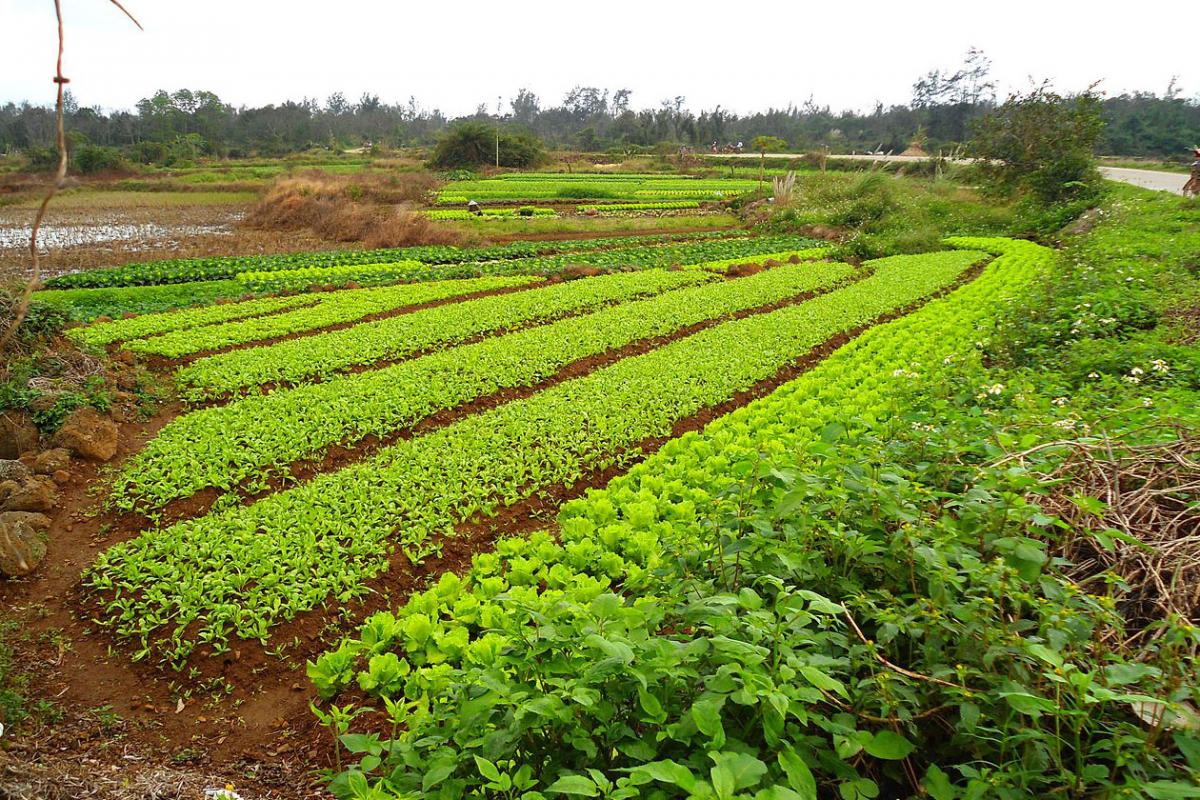
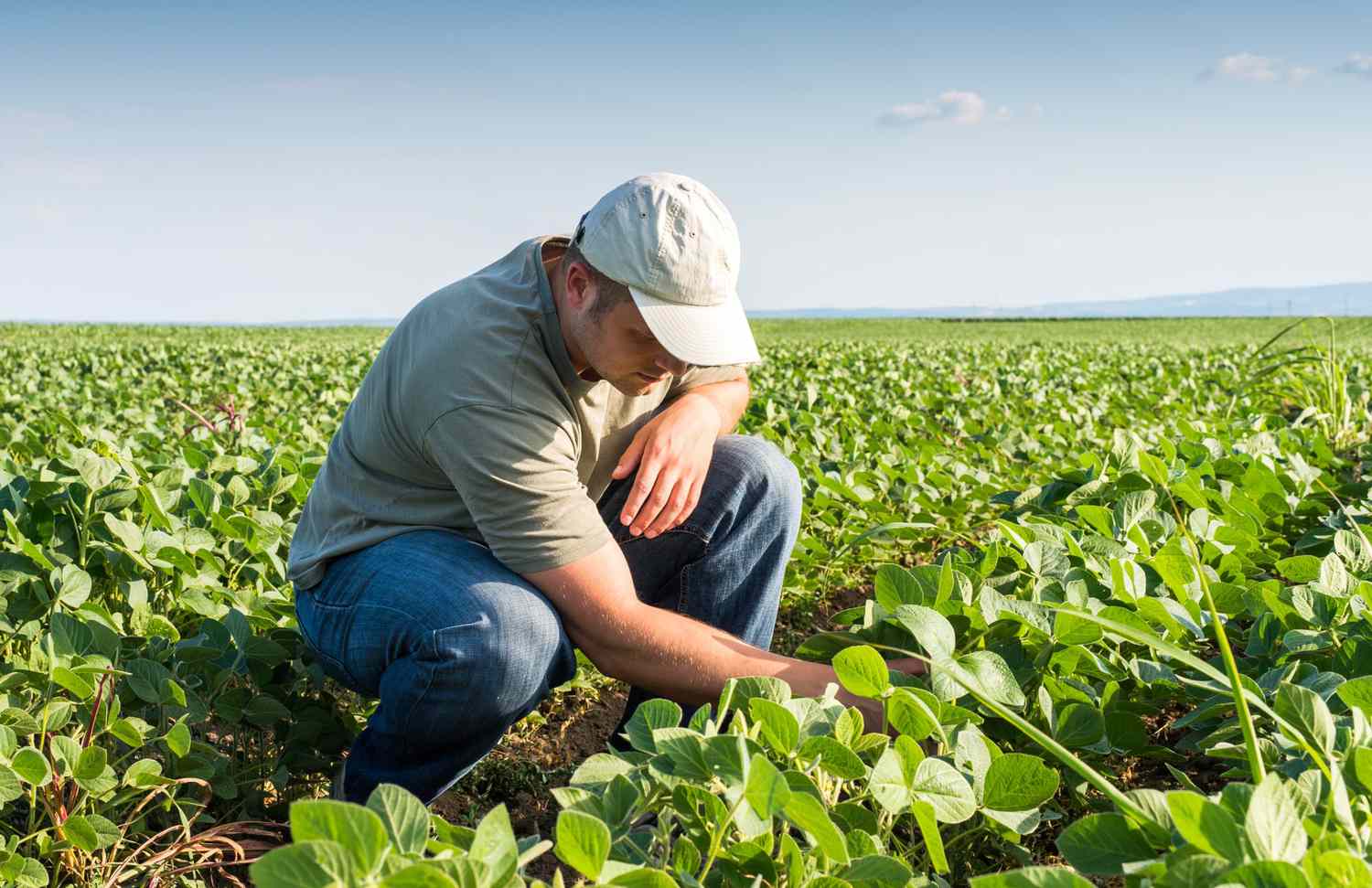

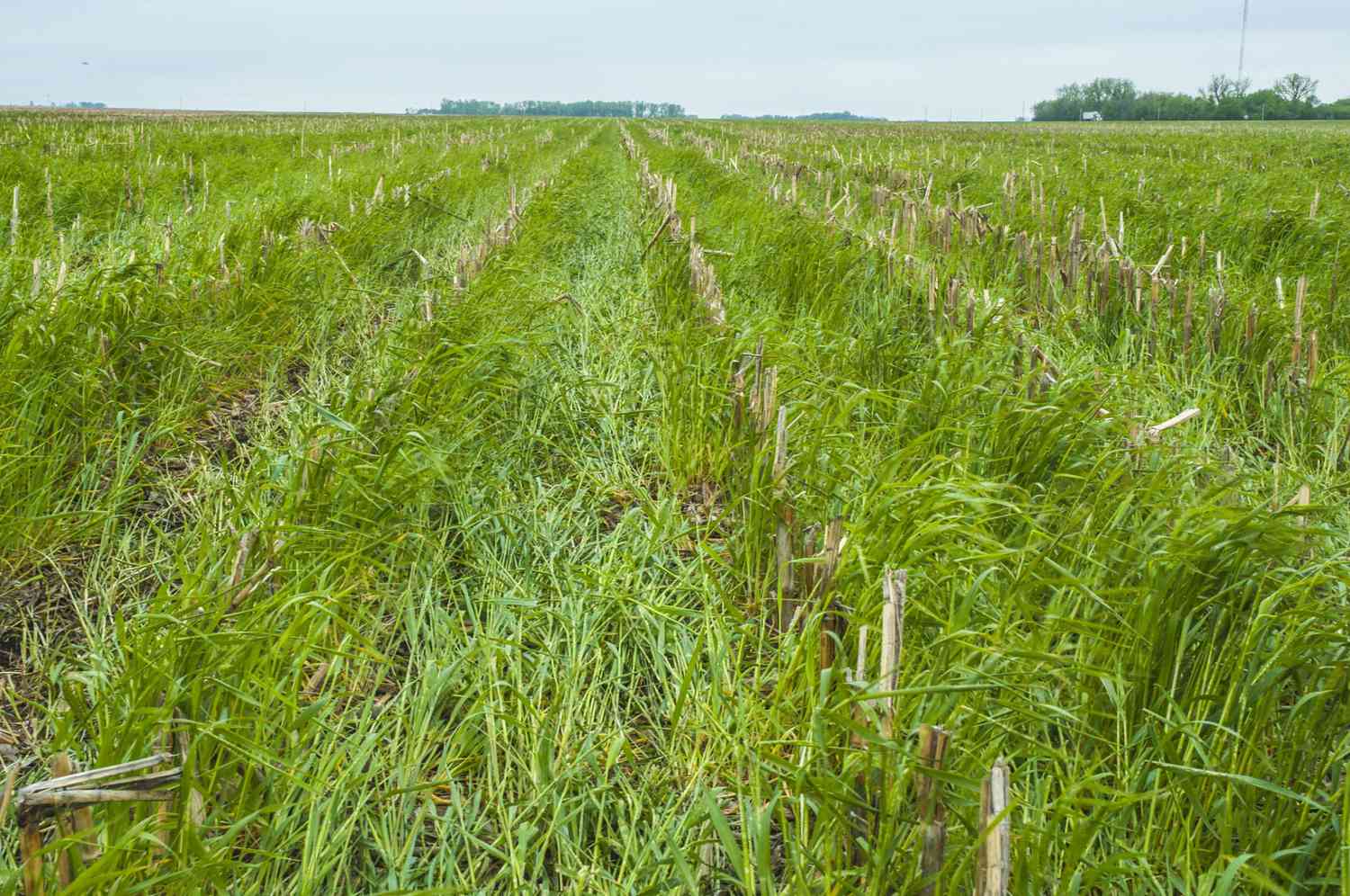


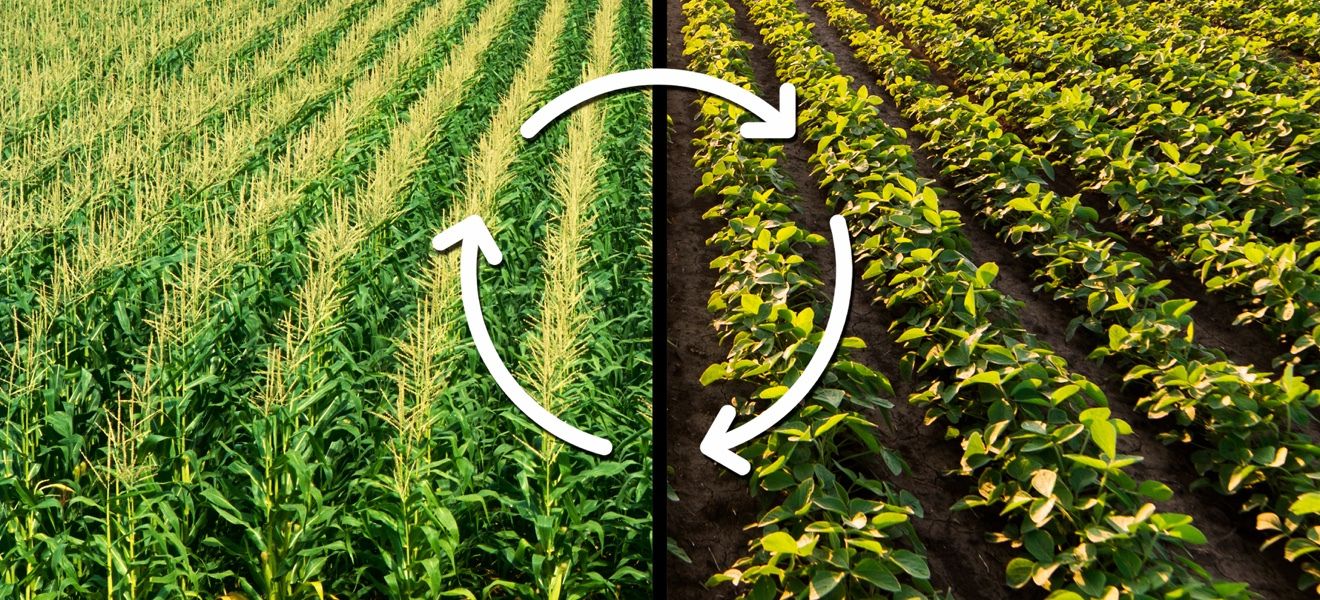
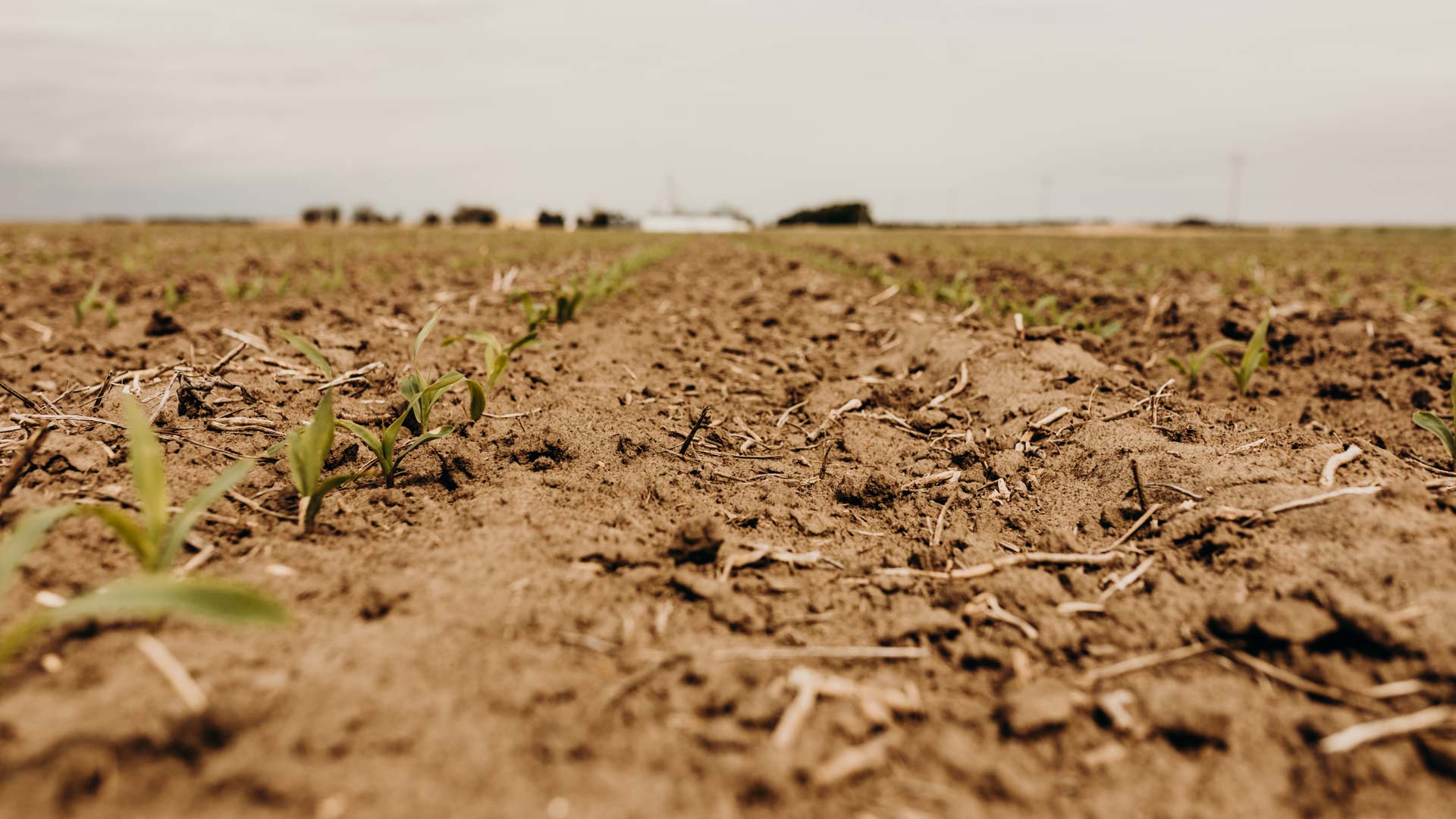


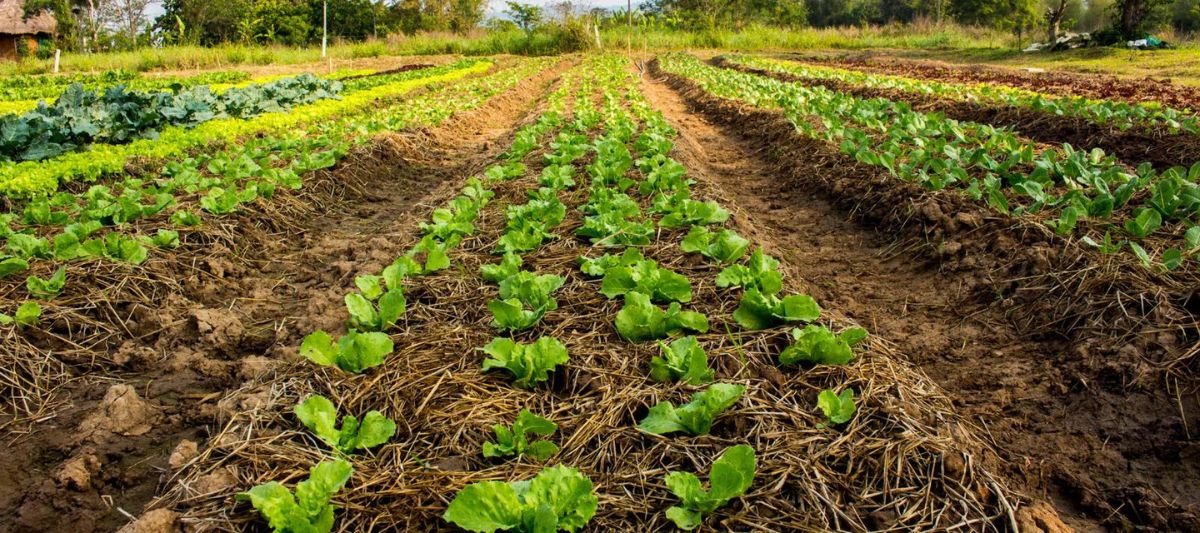
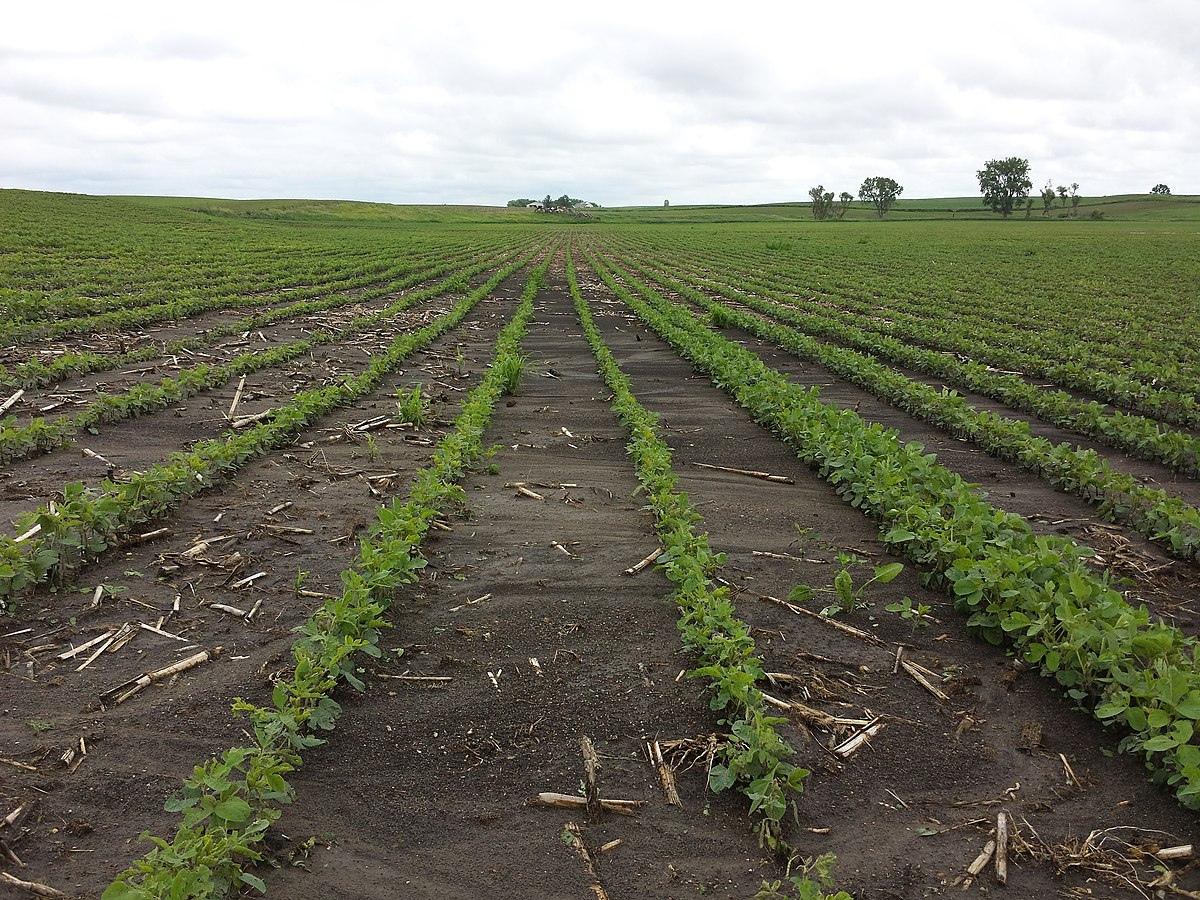

0 thoughts on “How Does Crop Rotation Affect The Environment?”